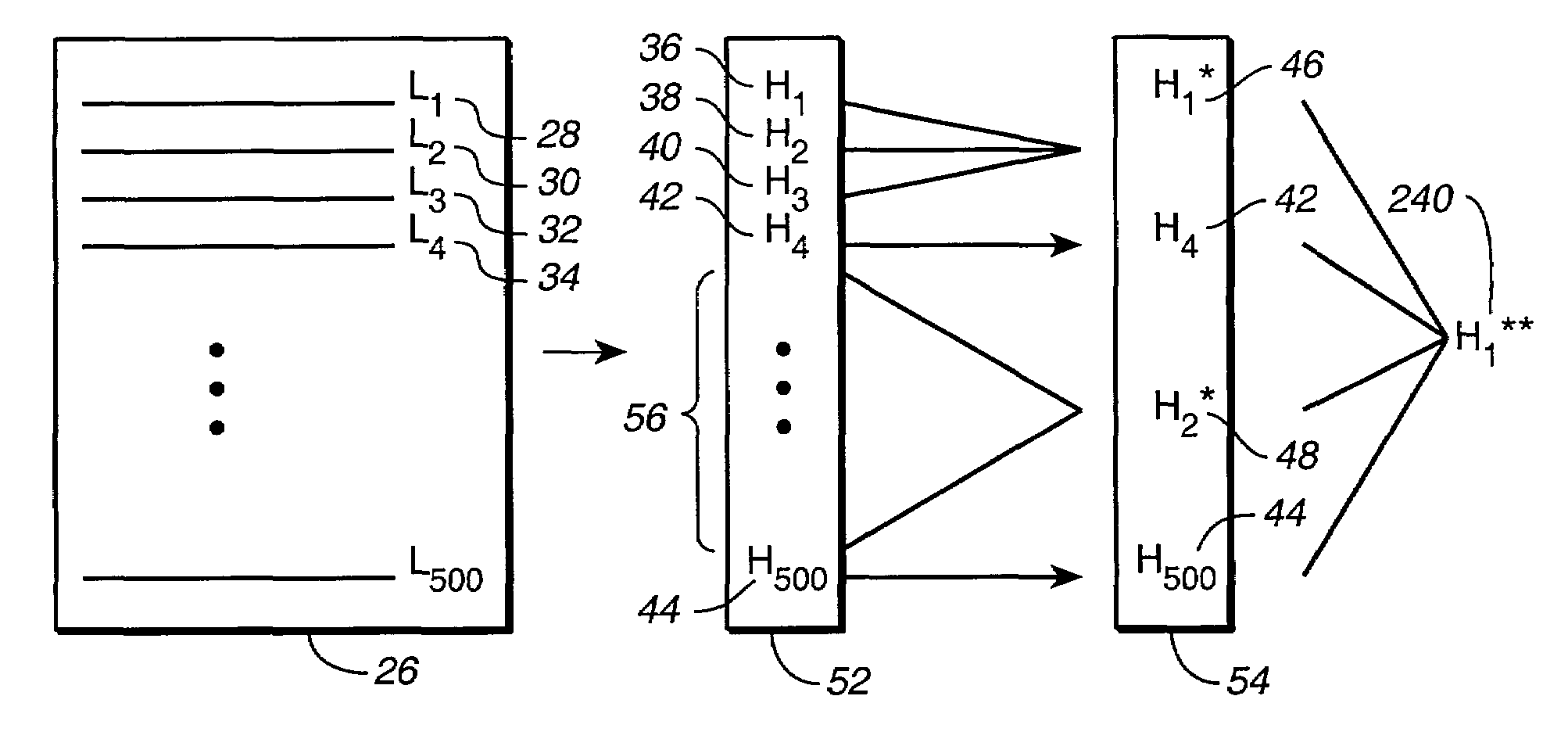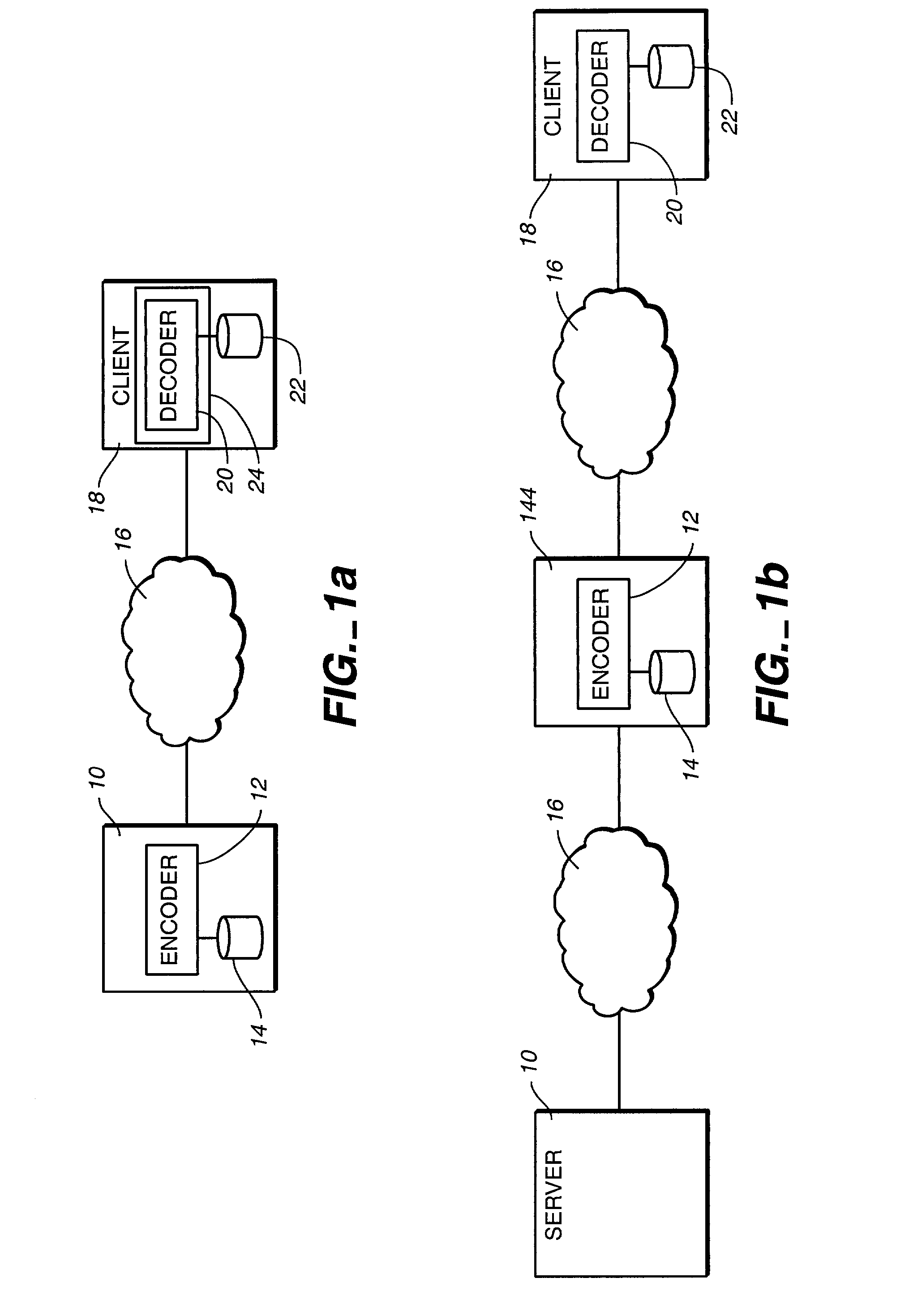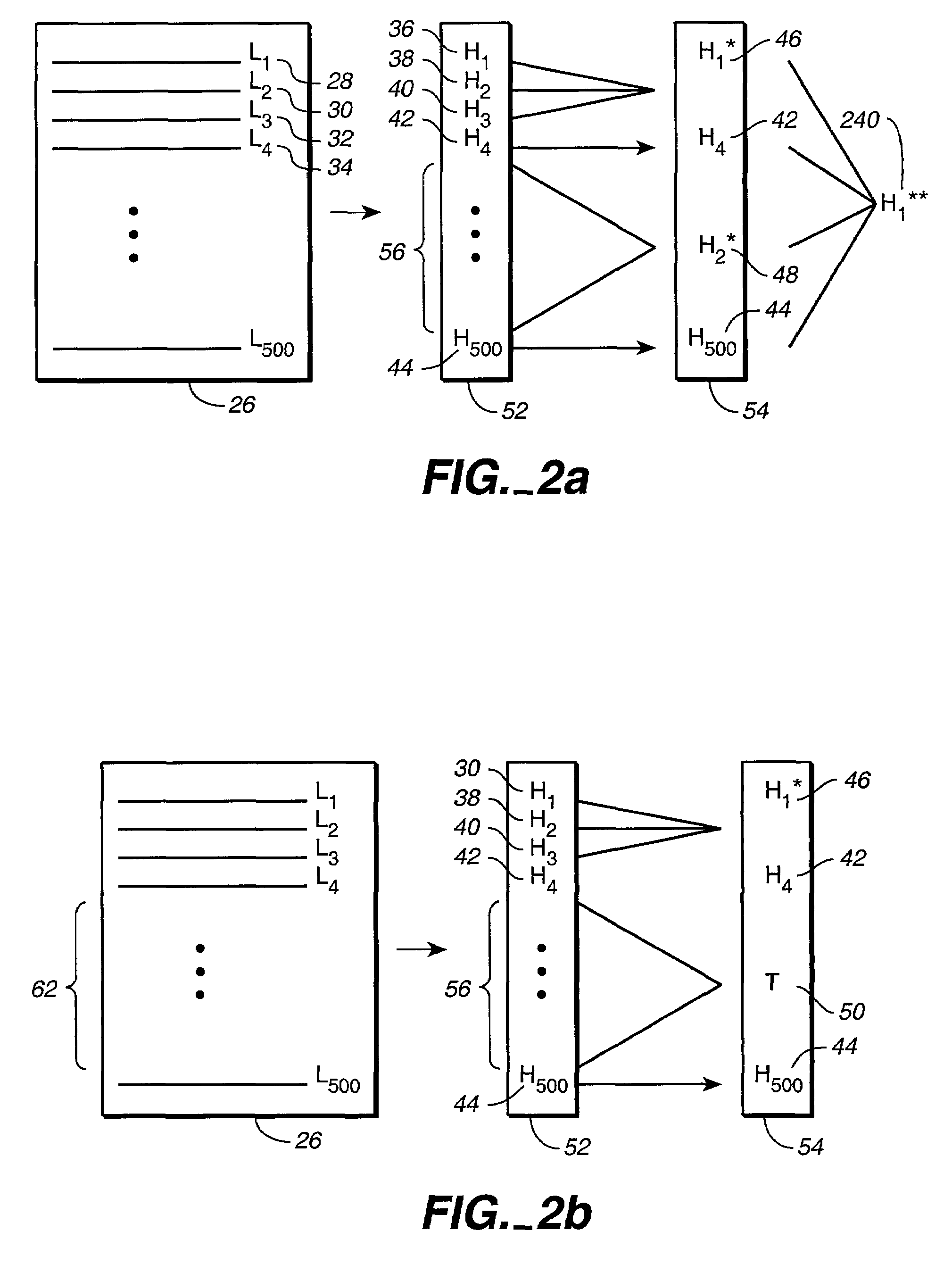Method and system for reducing network latency in data communication
- Summary
- Abstract
- Description
- Claims
- Application Information
AI Technical Summary
Benefits of technology
Problems solved by technology
Method used
Image
Examples
Embodiment Construction
[0050]The preferred embodiment described below focuses on Web pages which are encoded using hash codes. However, the scope of the invention is not limited to these types of data or encoding schemes. In fact, the invention works with any language or data with repeated text and various encoding schemes, such as MD5 checksums or 64-bit serial numbers, may be employed. This invention may also be used with content such as instant messaging and video.
[0051]With reference to FIG. 1a, a client 18, containing a Web browser 20, decoding software (“decoder”) 20, and a hash code database 22, and a server 10, containing encoding software (“encoder”) 12 and a hash code database 14, are each connected to a network 16. The decoder 20 can be integrated into the client's 18 operating system or a Web browser. The encoder 12 can be integrated into the server's 10 operating system, Web server, or may be a proxy Web server. In another embodiment, the encoder and decoder 12, 20 can be placed on the same b...
PUM
 Login to View More
Login to View More Abstract
Description
Claims
Application Information
 Login to View More
Login to View More - R&D
- Intellectual Property
- Life Sciences
- Materials
- Tech Scout
- Unparalleled Data Quality
- Higher Quality Content
- 60% Fewer Hallucinations
Browse by: Latest US Patents, China's latest patents, Technical Efficacy Thesaurus, Application Domain, Technology Topic, Popular Technical Reports.
© 2025 PatSnap. All rights reserved.Legal|Privacy policy|Modern Slavery Act Transparency Statement|Sitemap|About US| Contact US: help@patsnap.com



